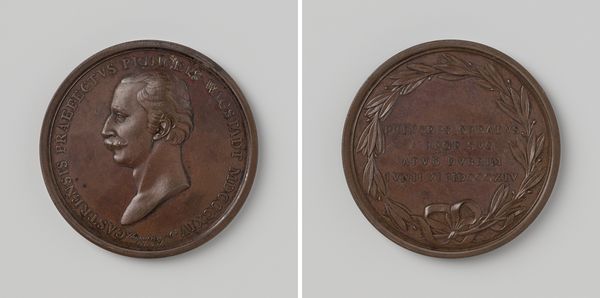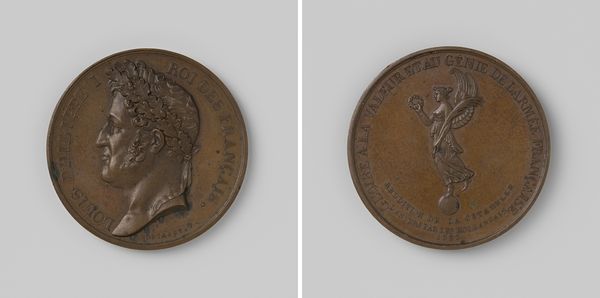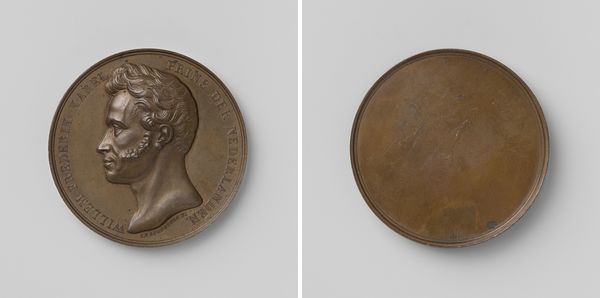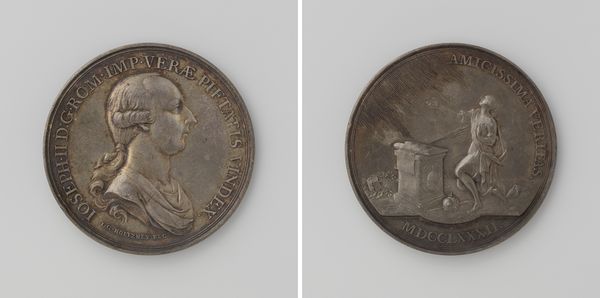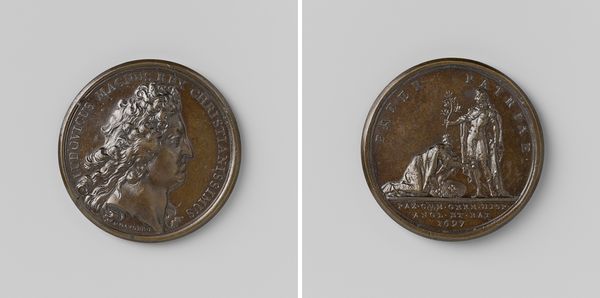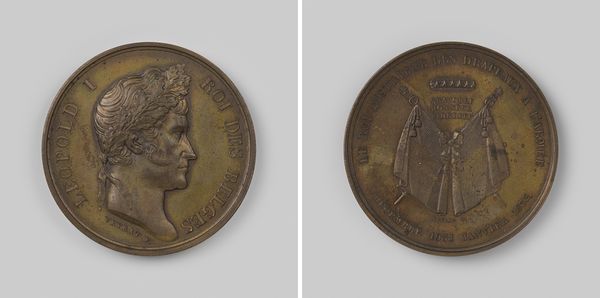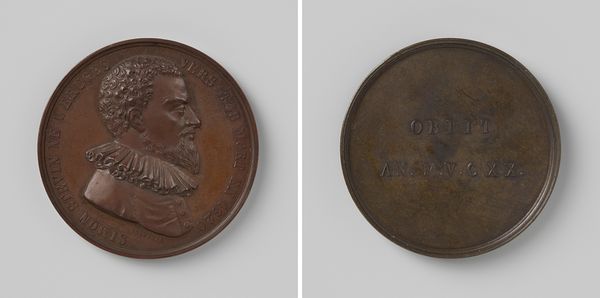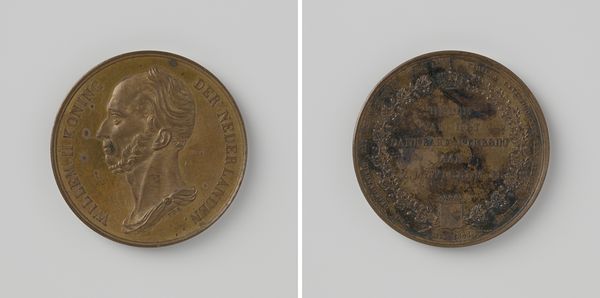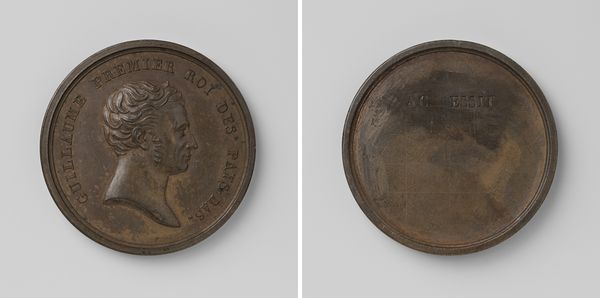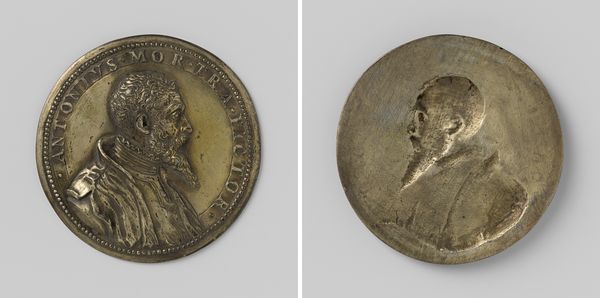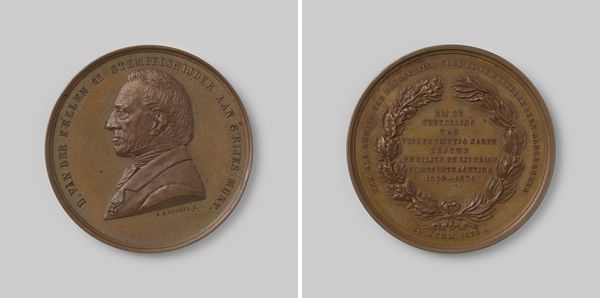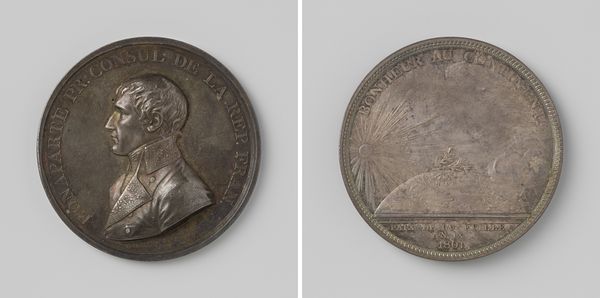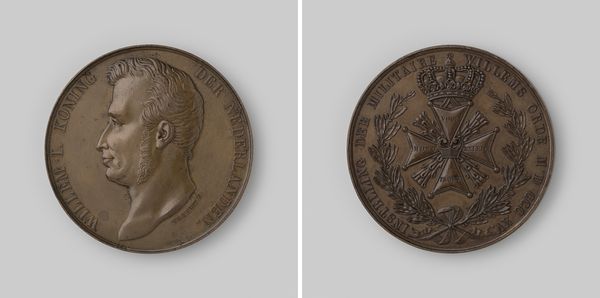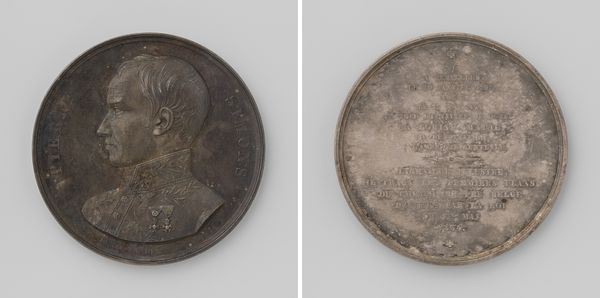
Ecole de Medicine Pratique te Brussel, ter ere van Willem I Frederik, koning der Nederlanden 1826
0:00
0:00
metal, bronze, sculpture, engraving
#
portrait
#
medal
#
neoclacissism
#
metal
#
sculpture
#
bronze
#
sculpture
#
history-painting
#
engraving
#
statue
Dimensions: diameter 4.5 cm, weight 438 gr
Copyright: Rijks Museum: Open Domain
Curator: Adolphe Jouvenel created this bronze engraving in 1826. It’s entitled "Ecole de Medicine Pratique te Brussel, ter ere van Willem I Frederik, koning der Nederlanden." Editor: Its circular form and bas-relief immediately suggest a coin or a medal. The patina gives it an aged, almost somber character. Curator: Indeed. Medals such as this one often served as commemorative objects. Let's examine the composition more closely. The obverse presents a profile portrait of Willem I, King of the Netherlands. Notice the precision in rendering his features, from the texture of his hair to the set of his jaw. The lettering arches along the rim, framing the portrait with text in Latin identifying the monarch. Editor: And the reverse is equally fascinating. The simple snake winding around the bowl. Asclepius’s symbol speaks volumes. The snake shedding skin has symbolized healing, renewal, and medicine since antiquity. Placing it under the new Brussels medical school connects back to classicism. Curator: Precisely, the imagery works in tandem with the inscription that states ‘School of Practical Medicine in Brussels’. I also feel a distinct Neoclassical influence at play here. There is balance, clarity, and an aspiration to ideal form. Editor: It certainly gives you a sense of connection to both history and this ideal of medical progress during this time period, doesn’t it? These symbols transcend their immediate context. The medal now captures a moment of early scientific advancement as well as King William I himself, as a tangible part of the larger medical cultural history. Curator: The restrained aesthetic reflects the values that it embodies, that feels like progress towards scientific understanding with very precise rendering. The weight and feel of the bronze contributes to its solemn presence. Editor: A fascinating example of how symbolic forms intersect with function and broader historical narratives, all held within this small object. It is both informative and powerful.
Comments
No comments
Be the first to comment and join the conversation on the ultimate creative platform.
